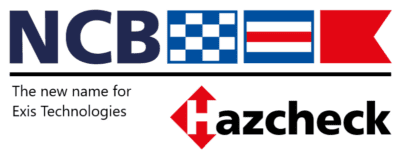National Cargo Bureau will inspect containers – American Shipper
Pilot project with Maersk seeks to uncover problems with improperly stowed or declared cargo
The National Cargo Bureau (NCB) has offered to help carriers inspect containers carrying imports to the United States to determine the extent of improperly declared or stowed cargo.
Ian Lennard, the president of New York-headquartered NCB, noted his organization has long performed inspections for carriers to make sure hazardous materials in containers outbound from the United States are properly stuffed and secured.
After discussions with Maersk, NCB has offered to inspect a sample of inbound containers arriving at U.S. ports for Maersk and several other carriers that are members of the Cargo Incident Notification System (CINS).
In March, a fire onboard the containership Maersk Honam killed five crew members, the latest in a troubling series of containership fires in recent years. A report on ship safety released by the insurer Allianz last month said “major fires on container vessels are among the largest hazards for the global shipping industry.”
It said firefighting capabilities on ultra large containerships “have not necessarily kept pace with increasing vessel sizes.”
Founded in September 2011, CINS says its mission is “to increase safety in the supply chain, reduce the number of cargo incidents onboard ships and highlight the risks caused by certain cargos and/or packing failures.”
Fifteen carriers are members of CINS and executives from Maersk, Hapag-Lloyd, Evergreen, CMA CGM and Mediterranean Shipping Company sit on its board.
Lennard noted that while NCB inspected more than 31,000 containers last year, nearly all were outbound containers for carriers wanting to make sure cargo was properly stowed before loading on their ships.
“The goal of the new program is to look at containers originating from countries where there are not a lot of container inspections”, said Lennard. “It is a way for the industry to figure out what we don’t know and hopefully it will lead to some knowledge and better ways to do things.”
“The program will begin in August”, he said, “and NCB will inspect 100 inbound containers for Maersk and tabulate its findings and look for trends.” He said initially the inspections will be done at Port of New York and New Jersey, although if there is a need, inspections might be done in other ports.
Lennard said Maersk will select which containers to inspect, and while they will come from around the world, he said a large number will be from ports in Asia.
NCB, which is a non profit dedicated to improving safety of life and cargo at sea, will perform the initial round of inspections voluntarily at no cost for the good of the industry, said Lennard. He said NCB has made a similar offer to inspect 100 containers each for the other companies that have executives on the CINS board.
While the Bureau can’t provide free inspections on an ongoing basis “we can help get a snapshot,” said Lennard. “We are excited to see what the outcome is. From a lot of ports, there is never a container inspection and the shipping line never sees the cargo inside the container.”
He noted it is difficult to gauge the extent of improperly stowed or declared cargo, since even improperly packed cargo will likely arrive safely at a port. But when something goes wrong, “it can cause quite a problem.”
Uffe Ernst-Frederiksen, the chairman of CINS and head of cargo management at Maersk, said while inspections similar to those being undertaken by NCB were done in Europe, “we will prefer to wait for the new trials conducted in liaison with CINS members before we communicate on the findings and when we do, then ensure we have the right reach geographically in place.”
John Verhoeckx is the owner of Port Supervisor, a four-man company that performs inspections of containers in Rotterdam. Last year his firm inspected about 4,000 outbound containers or about 15 percent of the outbound containers containing hazardous materials shipped by his company’s clients. About 10 percent of those containers were improperly placarded or labeled and 23 percent were rejected because of problems with lashing or securing of cargo. (There was some overlap between the two groups.) His clients include Hapag-Lloyd, ONE and Yang Ming.
He said there are similar companies doing cargo inspections in Antwerp and Hamburg.
Verhoeckx said his firm did a limited number of inspections on some inbound containers in Rotterdam about three years ago and found more than half were deemed not safe for sea transport. Many of those containers originated in China and India, which are large chemical exporters.
“I was really convinced there are a lot of problems with inbound containers, and that is why I offered to do it for free,” he said. “It was even worse than I expected it to be.”







